We are on a remote test track (HTCI) somewhere in the middle of the immense Mojave Desert in California, which opened its doors in 2006 and where, amongst high-speed ovals and various test circuits, there is a 4km specially designed for fine-tune the behavior of the Hyundai in the dynamic development phase. And it's so sinuous that it leaves anyone with a smile from ear to ear, as it does behind the wheel of this Hyundai RM19 , a prototype with racing genes.
The RM19 is the new addition to Hyundai's RM family (for Midship Racing or mid-engine “race ship”). 19 is the year of construction.
Visually, it has the air of an inflated Hyundai Veloster N — the most aggressive American “cousin” of the i30 N sold in Europe — but it has lost the unique rear door only on the passenger side.
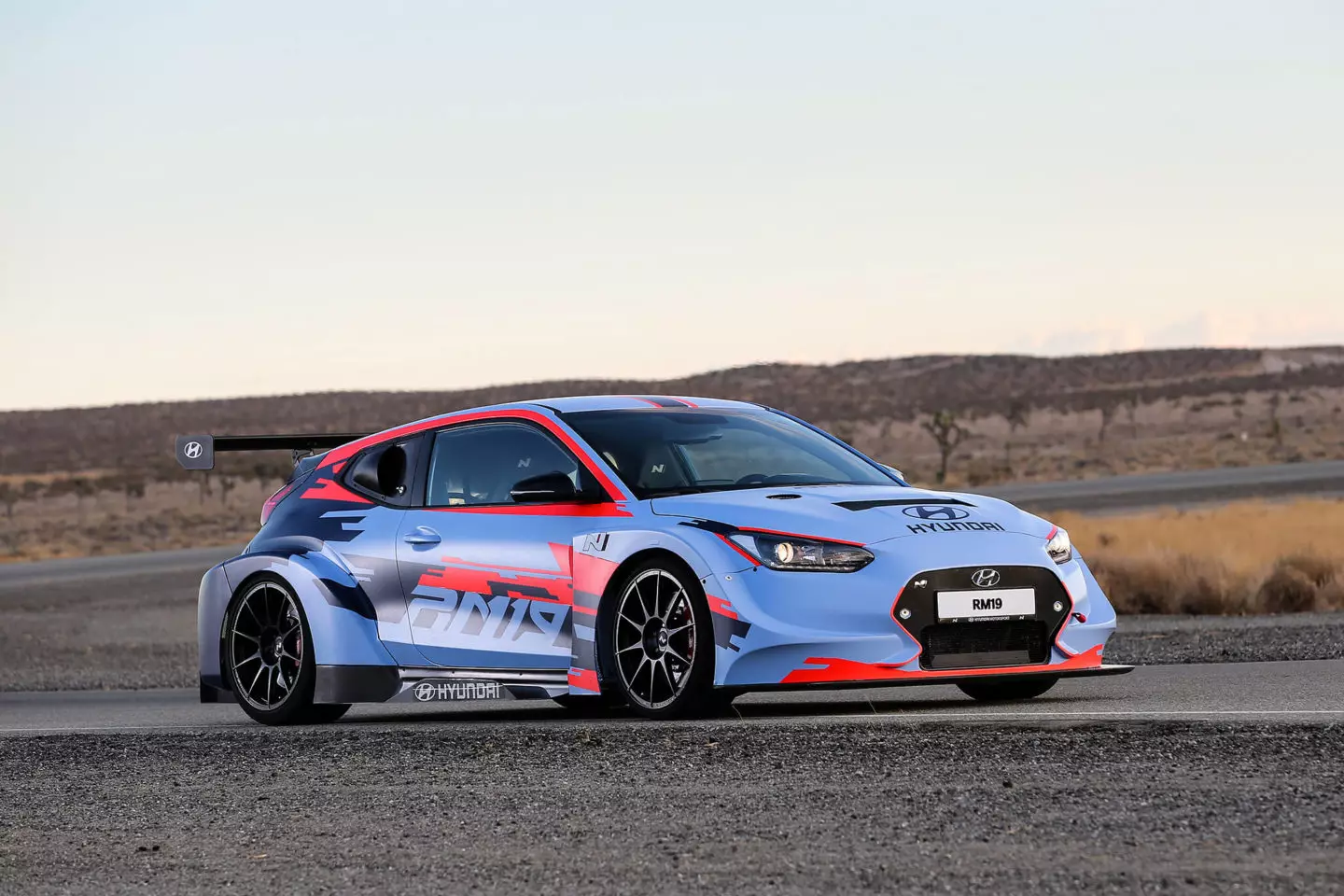
While it's true that in common with the series car it only has the headlights, there are several parts that it shares with the TCR competition version, as is evident when we look at the edges of the bodywork and also the flares around the four wheels (to create space for racing tires) or the dramatic rear wing responsible for pushing the rear of the Hyundai RM19, where the imposing diffuser also stands out. All in carbon fiber or kevlar to maximize rigidity and minimize weight, which is 1451 kg in this case.
mechanical revolution
Other really important changes were made to the two sub-chassis, mainly at the rear, with a new architecture of double overlapping wishbones (instead of multiple arms), also as a result of the new position of the engine, which moved from the front to the center of the car. .
Subscribe to our newsletter
This configuration further influenced the 48:52 mass distribution on the Hyundai RM19, yet balanced as the Korean and German engineers moved the fuel tank and radiator, and mounted it under the hood at the front of the car.
The brakes, on the other hand, have six-piston calipers at the front and four at the rear, while the tires are Pirelli P Zero measuring 245/30 ZR20 at the front and 305/30 ZR20 at the rear (ie road tyres).
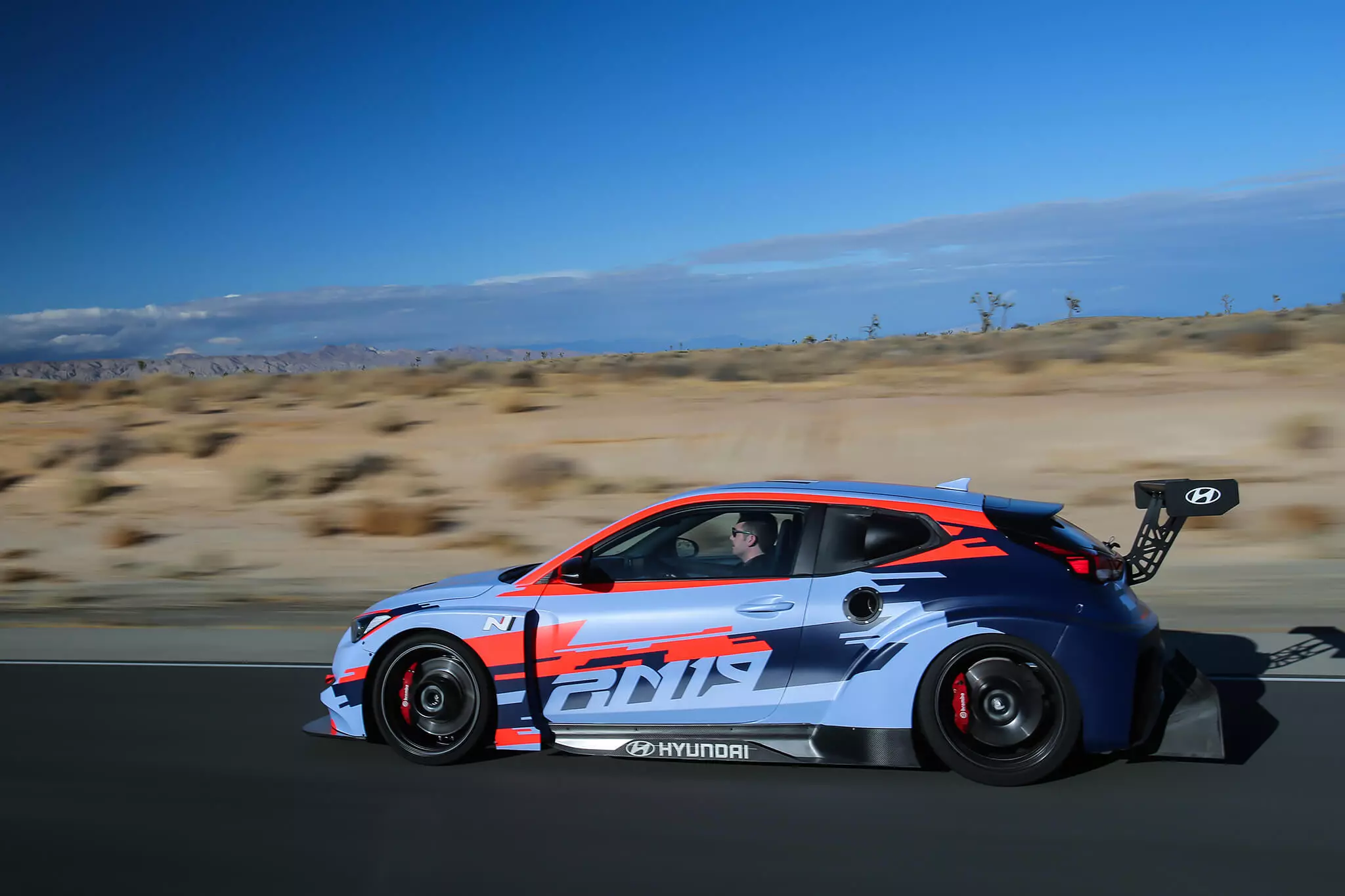
Inside it smells like racing
Inside, the changes are less radical, but a “cage” structure has been mounted behind the two bamboo seats and note that some elements have been removed, but not the instrumentation, nor the infotainment screen.
It smells like a race car in this cockpit with a small, thick steering wheel covered in Alcantara, five-point seatbelt, large carbon paddles for sequential gearshifts behind the wheel.
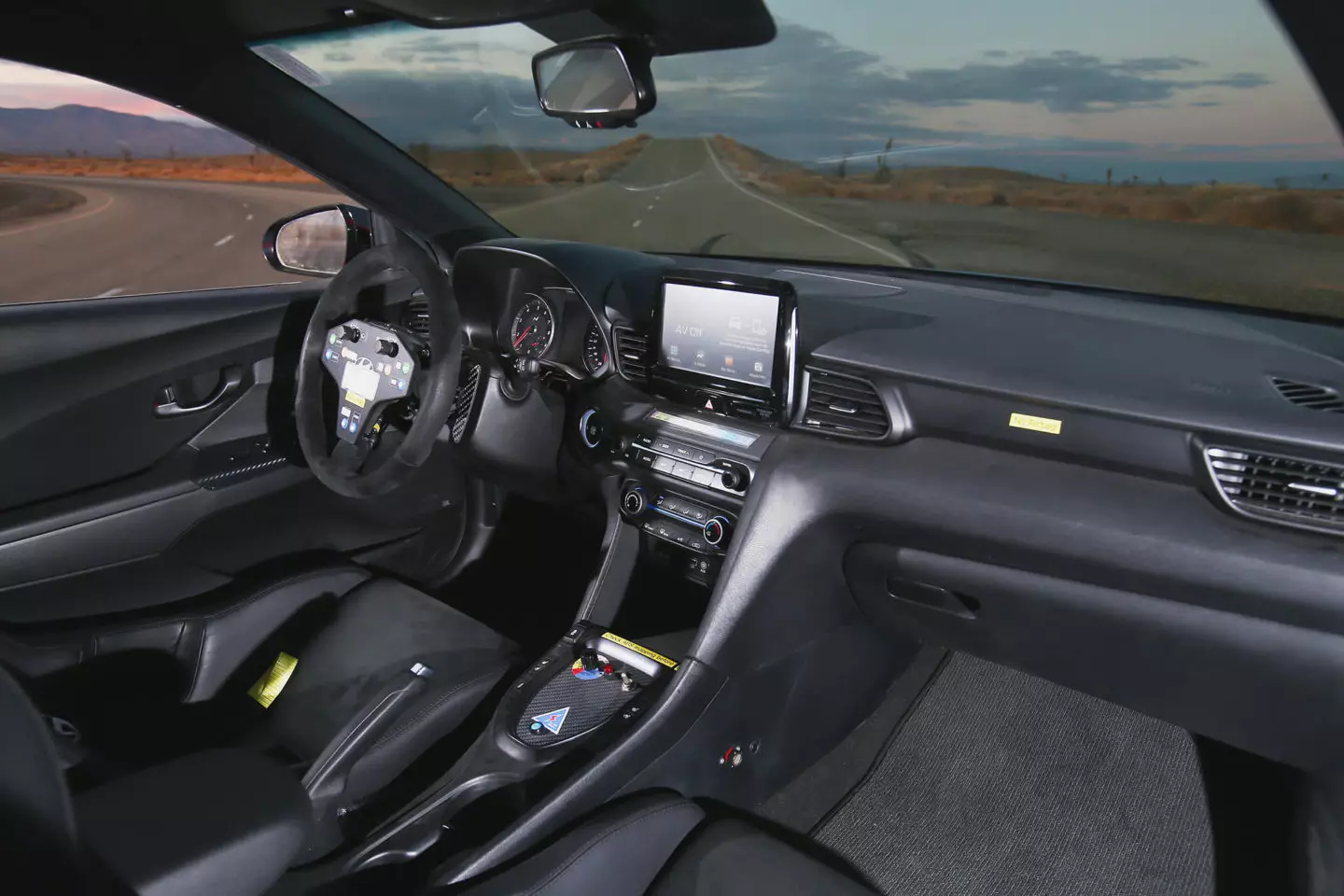
But one of the most important technical changes is, of course, the change from front to rear wheel drive:
“We mounted the engine behind the front seats on the rear axle where it sends its power, to ensure the best traction possible”
Explains Albert Biermann, the accredited engineer who appears to have taken several “M” genes to Asia when he moved from BMW to Hyundai after 32 years at the German manufacturer, the last seven as development director for the Bavarian sports sub-brand.
Let's get to this…
The heart of the Hyundai RM19 is the 2.0 l turbo block from the TCR, which produces 390 hp and 400 Nm in this prototype (instead of the usual 275 hp and 354 Nm on the i30 N and Veloster N as standard, thanks to the adoption of a larger turbo (similar to the Mercedes-AMG A 45), with a maximum pressure of 1.31 bar at 7000 rpm, close to maximum speed — ignition cut-off occurs at 7200… as we confirmed later (!).
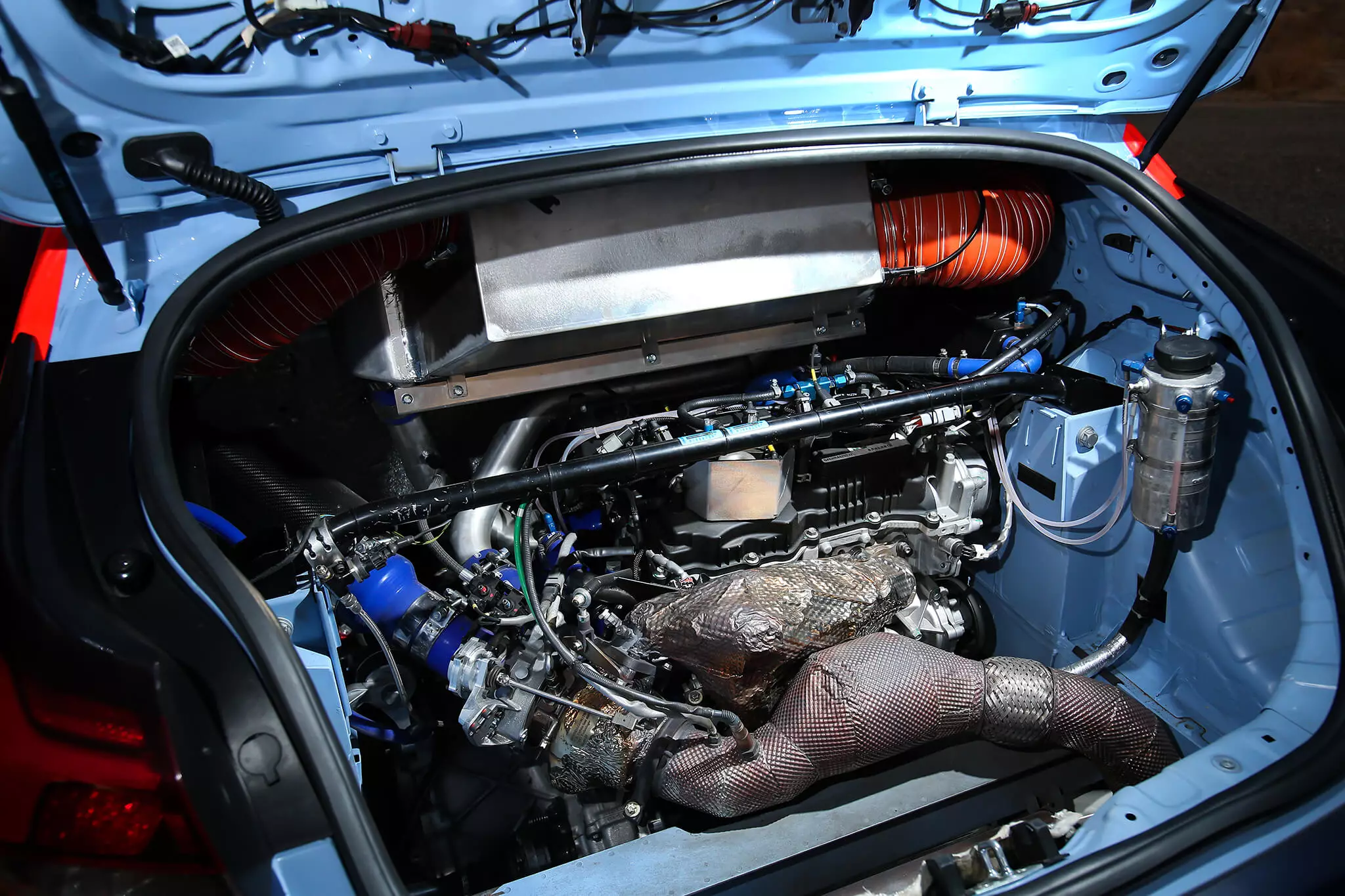
Taking care not to let the engine “silence” when starting, it is necessary to raise the engine speed to close to 2500 and release the clutch — which will not be used again in the following gears.
We went out to the track with the information that the tires are quite cold. The low temperature of the asphalt doesn't help them to heat up, because the nights in this desert are lived below freezing for most of the year. This means that a car, “civilian” tires and a driver dressed as a driver require some time to reach the ideal operating temperature. And we can even quickly get used to the winding track of the track, which invites us to raise the cadence, taking advantage of the fact that there is space (for mistakes…) to the left and right of the asphalt.
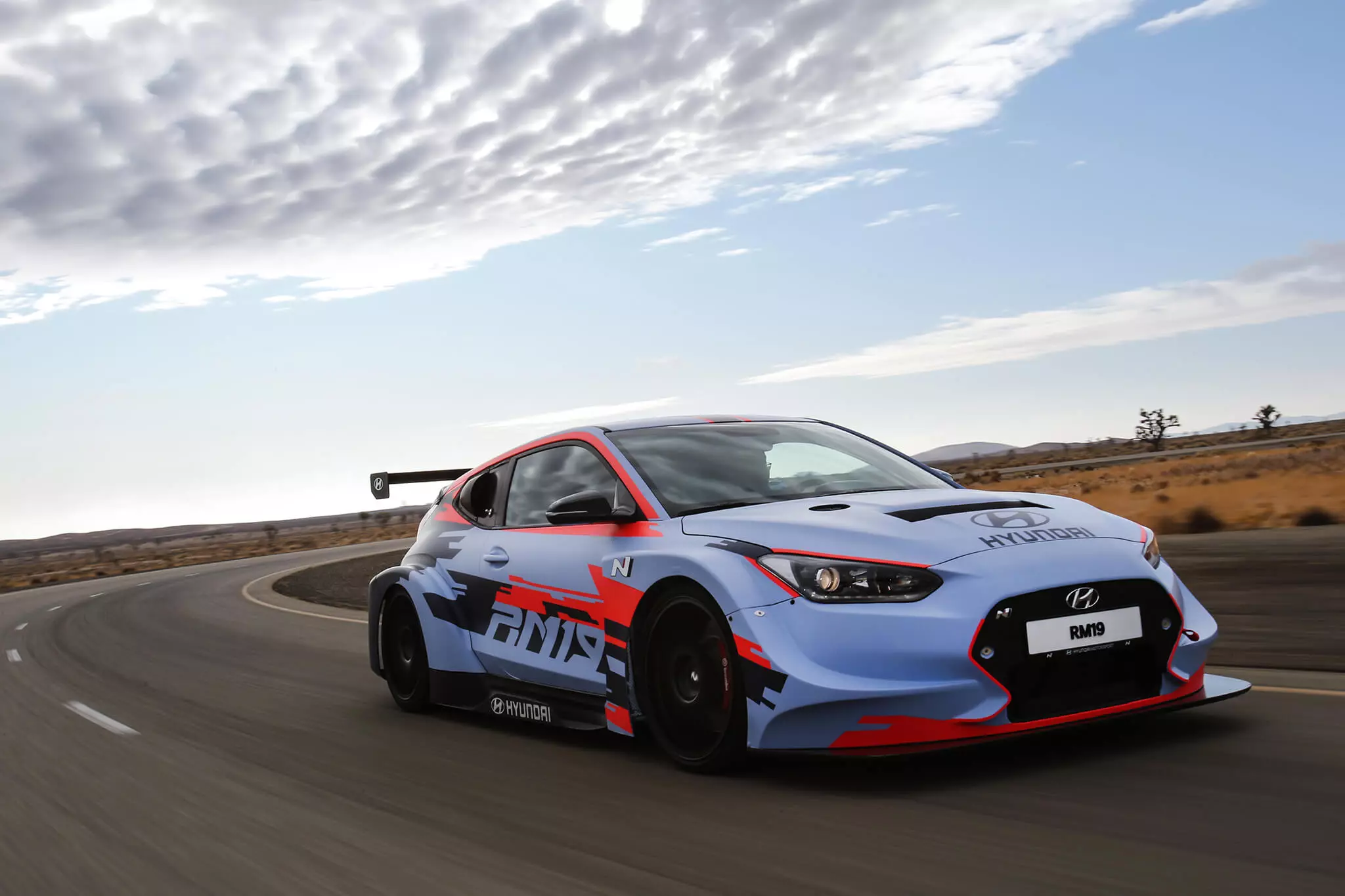
After two of the three laps granted, the three main actors (car, tires and driver) already live in harmony and the instantaneous gear changes flow at a maddening pace, most of the time between 3rd and 4th, while the 2nd is used only in three tighter and slower corners.
The Hyundai RM19's grip is surprising, considering that it is not equipped with slicks, and while it doesn't hold the car to the ground as much as these race tires do, they end up having the advantage of being more progressive and allowing more control. easily the rear when it comes loose.
"Forward" engine
Although several soundproofing materials have been removed, the powerful sound of the engine just behind the seat is tolerable for a race car. There is a lot of turbo-lag (delay in the response of the turbo) and below 4000 rpm the acceleration is disappointing, but everything becomes more interesting above that regime, which is when the engine shows its fiber.
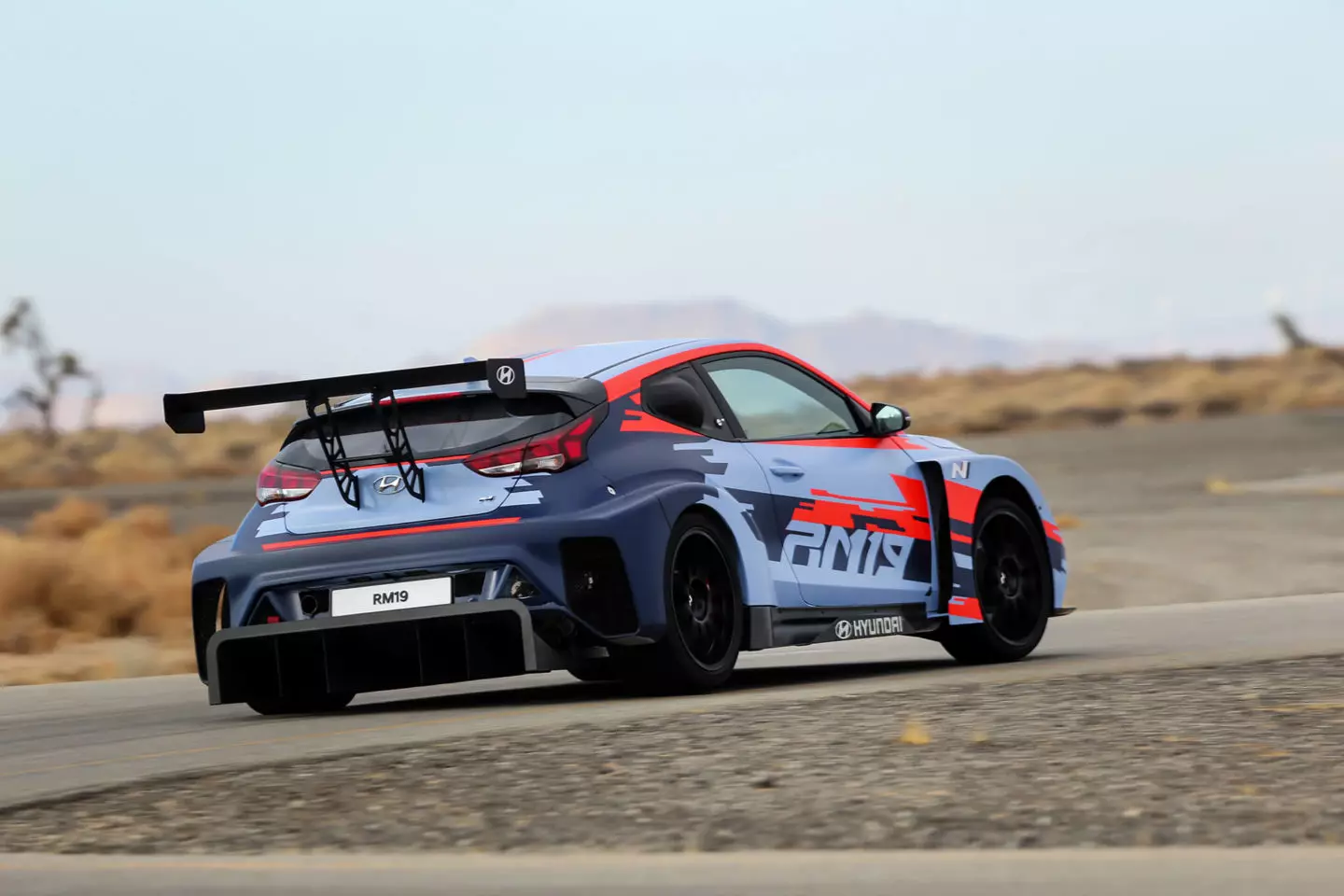
Hyundai engineers are aware of this limitation and are already working on a solution: the (future) RM20 will have electric propulsion, probably with the know-how of Rimac, the small Croatian manufacturer of electric supersports — in which the Hyundai Group has bought a stake (80 million euros) just under a year ago — which will also mean four-wheel drive and much more… ballistic performance!
But what is the use of this toy on wheels, loaded with force on the rear axle and with testosterone coming out of every pore?
Many would say that it won't be possible to produce a rear-wheel-drive compact car for Hyundai (the same was said for Kia until the amazing Stinger was introduced...), but dreaming is still allowed and a close look at Biermann's face (and knowing- a bit…) and members of its test team strongly suspect that the Hyundai RM19 is more than just a fun engineering exercise…
Text: Joaquim Oliveira/Press-Inform,.
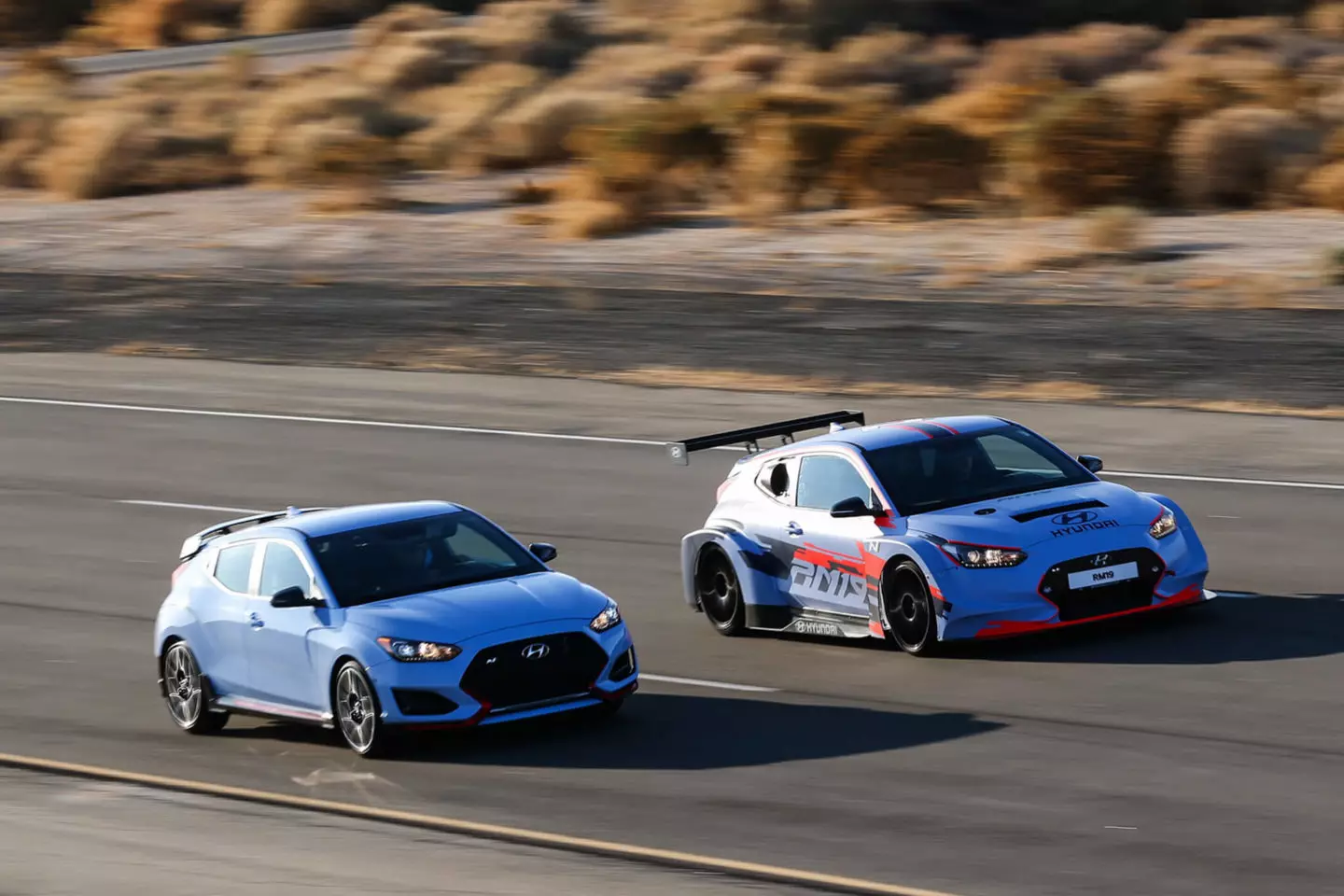
Side by side with Veloster N (not sold in Portugal)
Datasheet
| Motor | |
|---|---|
| Architecture and Position | 4 cil. in-line, back center |
| Displacement | 1998 cm3 |
| power | 390 hp at 7200 rpm |
| Binary | 400 Nm at 3500 rpm |
| Food | Injury direct, turbo, intercooler |
| Streaming | |
| Traction | back |
| Gear box | Sequential 6 speed |
| Dimensions and Capabilities | |
| Weight | 1451 kg |
| Wheels | F: 245/30 ZR20. T: 305/30 ZR20 |
| Installments and Consumptions | |
| Maximum speed | approx. 260 km/h |
